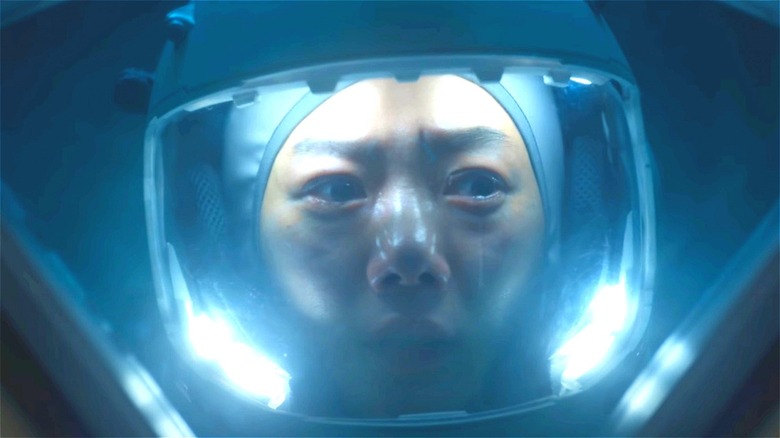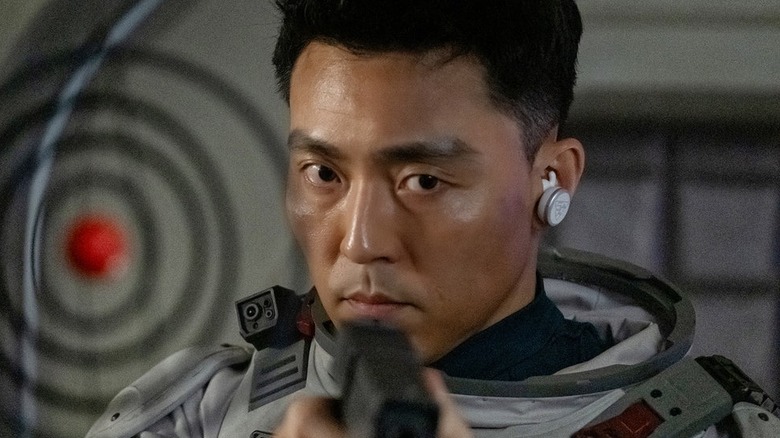The Silent Sea Scene That Went Too Far
One thing that has been made clear time and time again, in dozens of science fiction and horror films, books, and TV shows, is that exploring abandoned ships and deserted planetary bases is never a good idea. The mission may call for it, but those places are usually left behind for a reason. The brave crews of "Alien," "Event Horizon," and numerous "Doctor Who" episodes often meet unfortunate, violent ends after investigating the horrible circumstances that left certain planets and spacecraft completely vacant.
Recent South Korean Netflix series "The Silent Sea" features a group of space-faring folks looking to make the same mistake. This time, they plan to explore an abandoned research station to retrieve an important sample, but – spoiler alert – face serious danger when they get there. The show has been praised for its strong production values as well as criticized for plot holes and lack of characterization (via Yahoo!). However, one early moment on "The Silent Sea" felt especially horrific even compared to the later, more violent episodes.
The Silent Sea depicts casual animal cruelty
"The Silent Sea" is set in a near dystopian future where the planet is suffering from a lack of water and food. This situation naturally has consequences for people, but also animals.
The first episode explains that because there aren't enough resources for mankind, the South Korean government has made pet ownership illegal. Strange flex, but okay. In fact, owners are encouraged to bring in their animals to be euthanized. We then see droves of dogs getting captured and caged only to be later exterminated. A fish is also shown being experimented on as humans work to find solutions to their lack of water.
It's perfectly understandable that the show would try to emphasize the stakes of the story with disturbing details and more worldbuilding. Nevertheless, depicting animal cruelty in the opening scenes arguably feels like overkill. It also seems unlikely that the government could enforce the measure very well, either, so it's a cruel early plot detail that strains our suspension of disbelief.
The Netflix thriller could have easily established how bad things were without resorting to images of dogs in cages about to be destroyed.

